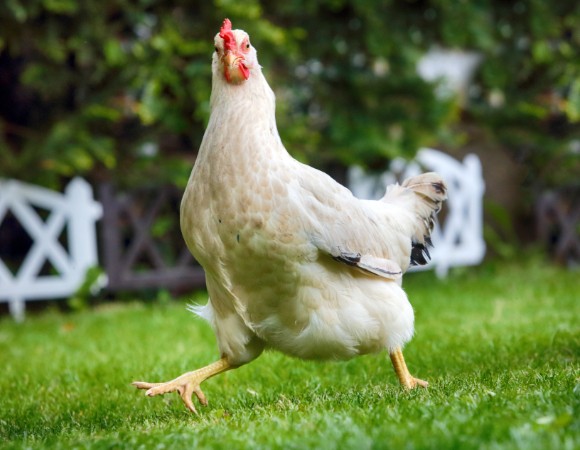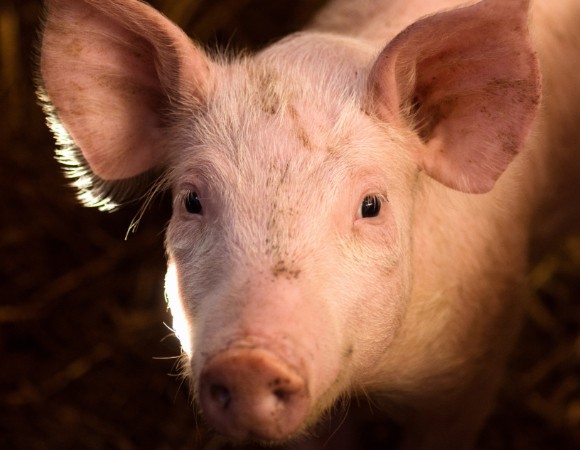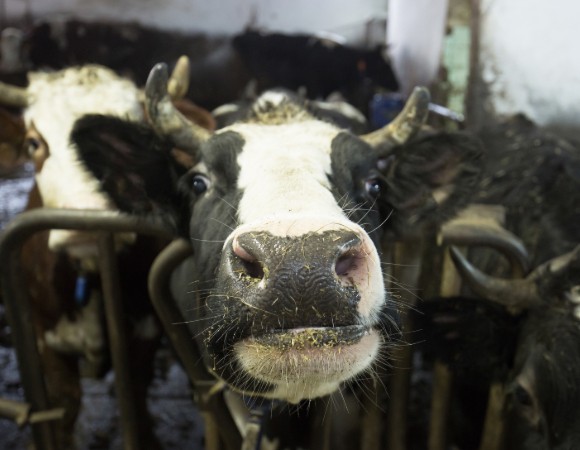- LNER introdujo un menú vegano a bordo.
- Costa Coffee lanzó una selección de productos salados y dulces de origen vegetal.
- Beyond Meat lanzó su pepperoni vegetal en Pizza Hut.
- Wetherspoon lanzó una hamburguesa especial Veganuary.
- El Aeropuerto de Ámsterdam ofrecerá un 60% de alimentos veganos en 2030.
- Las cadenas hoteleras de China se comprometen a ofrecer un 30% de menús vegetales en 2025.
- 45 países han prohibido las pruebas en animales para la cosmética.
- En los juegos Olñimpicos, las dietas basadas en plantas serán oficialmente respaldadas y promovidas como una opción para mejorar el rendimiento de los atletas.
- Un estudio indica que las dietas basadas en plantas podrían reducir la aceleración de la edad.
Translate
viernes, 15 de noviembre de 2024
Noticias vegan, algunas de una buena costumbre que se amplia en el mundo
martes, 12 de noviembre de 2024
sábado, 9 de noviembre de 2024
Nutri Vegan, comida saludable, Vegan, tienda de postres
Postres gourmet.
Tortas 120 g. aproximadamente, 250 g. 500 g. 1 lb. Tortas rellenas con dulce, Arroz con leche, Manjar, Natilla, Postre con fruta.
Gourmet líquido.
Leche de cereales. 250 ml. 1 l. Leche de soya. 250 ml. 1 l. Jugo natural 250 ml. 450 ml.
Gourmet
Arroz Thai, Entradas gourmet, Hamburguesa pan vegan sin levadura, Sandwich pan vegan sin levadura, Omelette.
Rellenas, Carne albóndiga, Carne molida, Carnes hamburguesa, Carnes precocidas, Almuerzos, Cenas, Pizza.
Tortillas de maíz, Tostadas canasticas.
Cena saludable 24 y 31 de diciembre.
2 menús.
$60.000 4 porciones.
$100.000 8 porciones.
$15.000 1 porción.
Plato mini, dulce 24 de diciembre.
Dulce de manjar vegan, natilla vegan, buñuelo vegan.
$5.000
Comprar en efectivo o con tarjeta.
https://nutrivegancomidasaludable.blogspot.co
Valle del Cauca, Colombia
viernes, 8 de noviembre de 2024
Se está haciendo
Se está haciendo y se puede hacer muchas o una cosa buena, cada día.
Ser generoso, ayudador, respetuoso, Optimista activista, practicar el bien con los animales, las plantas, el medioambiente.
sábado, 2 de noviembre de 2024
Comer sin animales en el plato, la única forma de salvar al mundo y a la especie humana de la extinción
Es verdad, lo dice la lógica y la ciencia.
La explotación de los animales es la culpable en mayor cantidad de los gases de efecto invernadero, de la destrucción de los bosques, de las quemas que asesinan animales, vegetación, los suelos naturales, contamina las aguas, el aire. Agravando el cambio climático, la desertificación, la sequía, entre otras afectaciones al equilibrado ciclo de la naturaleza.
Disminuir la cantidad de animales que se inguieren hasta eliminar totalmente de las dietas a los animales, Es la única forma de detener y revertir el gravísimo daño a la naturaleza.
Presentarlo que es que se puede o no decidir es equivocado.
El agua dulce del planeta se está secando, la temperatura aumenta, los glaciales se derriten, la tierra y los océanos son contaminados explotados, saqueados, dañados con avaricia y maldad de unos que tienen unas herramientas económicas y comerciales, sin la inteligencia que les haga entender que el daño al medioambiente les acabará a ellos y a todos. Que la plata hecha por algunos humanos nunca dará oxígeno, ni agua, ni alimentos, ni ninguna cosa que da vida.
Decida ser parte de la salvación, de la respuesta correcta, no del problema.
El consumismo de variedad de cosas, la superficialidad, el egoísmo, tienen que sacarse de las sociedades, en todos los ámbitos.
Muy atrazados son algunos humanos, autodestructivos, sin inteligencia.
De destuirse lo que produce los alimentos, ninguna posibilidad de eligir habrá, no existirá que comer, lo que quede será el reino mineral.
Los animales de otras especies van eones en consciencia, lógica e inteligencia, porque saben vivir en y de la naturaleza, cuidándola y tomando solo lo requerido, conocen muy bien el planeta y viven en el presente con plenitud, cuando están libres en la naturaleza.
viernes, 1 de noviembre de 2024
Día mundial del Veganismo
Hoy es el Día Mundial del Veganismo
En este día se celebra la decisión voluntaria y consciente de abandonar la carne y los productos derivados de los animales con el fin de eliminar el sufrimiento de vacas, cerdos, gallinas, pollos, peces, etc, ayudar al ambiente y a la conservación de la biodiversidad y mejorar las condiciones de vidas de otros seres humanos sin acceso a la alimentación mínima.
En este día te invitamos a repensar tu dieta, a reflexionar sobre el dolor y el daño que la carne que te comes trae consigo, a extender tu círculo de compasión a todas las criaturas del mundo que comparten este lugar con nosotros y que también merecen llevar vidas sin agonía y sufrimiento.
¡Piensa antes de comer!
Publicado
El primer día de noviembre se celebra el Día Mundial del Veganismo, que conmemora la formación de la Sociedad Vegana del Reino Unido. Muchos años han pasado desde entonces, que lejos de reconocer a un grupo de personas, busca crear conciencia sobre el trato que le damos a los animales y la urgente necesidad de cambiar nuestro sistema alimentario.
¿Por qué es importante esta fecha?
Mientras lees estas líneas, millones de animales son explotados en granjas industriales. Día con día, pollos, peces, gallinas, vacas y cerdos nacen para ser asesinados en mataderos a los pocos días o meses. El ciclo de inseminación forzada para las cerdas y vacas mamás se repite constantemente. El confinamiento, los golpes y abusos son prácticas estándar a las que los animales explotados por su carne, huevos o leche son sometidos diariamente.
Ella te necesita.



El día de hoy, te invitamos a probar algo diferente. Comienza tu día con una alimentación sin carne, huevos ni leche; en su lugar descubre los beneficios de las frutas, verduras y granos. ¿Te animas a intentarlo? Descarga gratis la Guía vegetariana para principiantes y dile SÍ a una alimentación compasiva.
VEGANISMO
es
9.48
millones de animales matados cada hora para comida
Es considerar que los animales merecen ser respetados, no participar de su explotación y luchar para acabar con prácticas que hacen que sufran y mueran por nuestros intereses.
La carne, los huevos, los lácteos, las pieles… todos estos productos implican que se críen, exploten y maten animales, aunque no lo veamos a diario.
Es vivir respetando a los demás animales.
No es solo dejar de comer carne, es considerar que los demás animales tienen intereses que merecen ser respetados y, por lo tanto, actuar en consecuencia: el veganismo implica no utilizar ni consumir productos obtenidos con su explotación.
hacerse vegan@
es
ASEQUIBLE
No te costará más… de hecho puede que ahorres por ejemplo en alimentación, ropa y ocio.
FÁCIL
Hacerse vegano/a es muy sencillo, tenemos montones de opciones para comer, vestir y entretenernos.
PARA TODO EL MUNDO
Para todas las edades, economías y estilos de vida.
SOLIDARIO
Elige la compasión y el respeto por los demás animales. Suena cursi, pero es revolucionario.
¿Entonces qué coméis, vestís...?
Pues todo lo demás 🙂
PROTEÍNA VEGETAL
Legumbres y derivados de legumbres como tofu, soja texturizada, tempeh, natto... || También frutos secos, semillas, etc.
COMEMOS...
¿Pero no es muy caro? ↗
VESTIMOS
¿Ni lana ni cuero? ↗
VEGETAL, SINTÉTICO, SIN EXPERIMENTACIÓN ANIMAL
Algodón, lino, yute, cáñamo, piñatex®, corcho, caucho, poliuretano.
¿Hay muchas personas veganas?
En Reino Unido:
4,7%
de la población, unos 2,5 millones de personas.
Además, un 5,8% se declaran vegetarianos/as.
Datos de 2024
En Francia:
3%
En Italia:
2,4%
En Alemania:
1,79%
En España:
2%
En EUROPA:
3,2%
de la población europea, unos 2,6 millones de personas.
Datos de 2023
Ver estudio de Meticulous Research ↗
Publicado
jueves, 31 de octubre de 2024
Solo el 2.8 porciento de los océanos están algo protegidos
Solo el 2,8% del océano mundial está protegido "efectivamente"
Just 2.8% of the world’s ocean is protected “effectively”
Governments far short of pledge to conserve 30% of the ocean by 2030
Two years after the world’s nations committed to conserve at least 30% of the Earth’s land, freshwater, and ocean by 2030, only 2.8% of the ocean is assessed as likely to be effectively protected, reveals a report launched today by a consortium of nature NGOs and funders.
Released ahead of the COP16 UN Biodiversity Conference1, ‘On track or off course? Assessing progress toward the 30x30 target in the ocean’ reveals that countries are significantly falling short of that pledge. Only 8.3% of the world’s ocean is designated as marine protected areas (MPAs), and most are either protected in name only or so loosely regulated that substantial harmful activities are allowed to continue within them. Moreover, as of 23 September 2024, just 19 countries and the EU had submitted NBSAPs with national marine biodiversity targets to the CBD Secretariat2 - a critical first step in the biodiversity conservation process.
The “30x30” target, agreed at the COP15 UN Biodiversity Conference in 2022, is the most ambitious conservation commitment ever made. However, the report finds that the global marine area under some form of protection has increased by just 0.5% since then. At that rate of progress, just 9.7% of the ocean will be protected by 2030.
‘On track or off course? Assessing progress toward the 30x30 target in the ocean’, was written by Metabolic Consulting with support from the Bloomberg Ocean Fund and developed in partnership with Campaign for Nature, the Marine Conservation Institute, and SkyTruth.
It warns that the broad definition of MPAs is inconsistently applied by countries, leaving scope for “blue washing”. Many MPAs allow the continuation of activities that are incompatible with effective biodiversity conservation such as industrial-scale fishing and harmful fishing methods, oil and gas extraction, mining, dredging, and dumping. Even where countries state the goal of high or full protection, the MPA may not be implemented or sufficiently resourced in a way that is likely to achieve this.
The report is based on analysis led by the Marine Conservation Institute, with data shared by ocean experts around the world who are evaluating MPAs in their countries. They assessed nearly 90% of the global MPA area and found that just 2.8% is implemented and “fully” or “highly” protected – the levels defined as “effective” protection by a global standard called The MPA Guide.
Beth Pike, Director of Marine Protection Atlas at the Marine Conservation Institute, said: "Two years after the aspirational increase of the global conservation target to 30% of our ocean by 2030, quality continues to lag behind quantity: less than 3% of marine areas are truly protected. The gap between pledge and action is vast, and without urgent, meaningful protection, the 30x30 goal will remain unrealized. The time to turn commitments into real, meaningful change is now - because our ocean can’t wait."
Lack of effective protection is a global problem
Lack of effective protection is a global problem
In countries where The MPA Guide has been applied to a portion of the country’s reported MPAs, the report finds MPA quality lagging behind quantity. The UK is a clear example of the gap between designating areas and protecting them effectively: while 47% of its domestic waters (excluding Overseas Territories) are in MPAs, less than 1% has been assessed as likely to be effective. This is largely because only specific features or species are protected, not the entire MPA sites. This creates a loophole that allows some of the most destructive fishing methods, including bottom trawling, to legally continue in more than half of these MPAs.
This lack of effective protection is seen worldwide, even in regions that appear to be making the most progress in marine conservation. While Latin America and the Caribbean countries have designated 27% of their collective nations’ ocean waters as MPAs, only 2.5% has been assessed and classified as likely to be effective. North America has protected 22% of marine waters under national jurisdiction, with 17% of them assessed and classified as likely to be effective. Europe has protected 20%, but only 7% were assessed and classified as likely to be effectively protected. Although these three regions have been leaders in designating MPAs, they have yet to announce any plans to increase coverage by 2030.
Melissa Wright, Bloomberg Ocean Initiative lead at Bloomberg Philanthropies, said: “The 30x30 target is a historic opportunity to secure a sustainable future for the ocean. Despite a few bright spots and some progress on the push for high seas treaty ratification, this new report shows that not only has progress been almost non-existent since 2022, but the majority of existing and new marine protected areas are unlikely to provide meaningful protection to marine biodiversity. Fortunately, there is still time for governments to make good on their commitment if they act with urgency. The COP16 Biodiversity Conference provides a key opportunity to announce new contributions and finance for 30x30 and keep us on track. With momentum for ocean protection growing, the time to act is now.”
In countries where The MPA Guide has been applied to a portion of the country’s reported MPAs, the report finds MPA quality lagging behind quantity. The UK is a clear example of the gap between designating areas and protecting them effectively: while 47% of its domestic waters (excluding Overseas Territories) are in MPAs, less than 1% has been assessed as likely to be effective. This is largely because only specific features or species are protected, not the entire MPA sites. This creates a loophole that allows some of the most destructive fishing methods, including bottom trawling, to legally continue in more than half of these MPAs.
This lack of effective protection is seen worldwide, even in regions that appear to be making the most progress in marine conservation. While Latin America and the Caribbean countries have designated 27% of their collective nations’ ocean waters as MPAs, only 2.5% has been assessed and classified as likely to be effective. North America has protected 22% of marine waters under national jurisdiction, with 17% of them assessed and classified as likely to be effective. Europe has protected 20%, but only 7% were assessed and classified as likely to be effectively protected. Although these three regions have been leaders in designating MPAs, they have yet to announce any plans to increase coverage by 2030.
Melissa Wright, Bloomberg Ocean Initiative lead at Bloomberg Philanthropies, said: “The 30x30 target is a historic opportunity to secure a sustainable future for the ocean. Despite a few bright spots and some progress on the push for high seas treaty ratification, this new report shows that not only has progress been almost non-existent since 2022, but the majority of existing and new marine protected areas are unlikely to provide meaningful protection to marine biodiversity. Fortunately, there is still time for governments to make good on their commitment if they act with urgency. The COP16 Biodiversity Conference provides a key opportunity to announce new contributions and finance for 30x30 and keep us on track. With momentum for ocean protection growing, the time to act is now.”
The report reveals that:Just 14 countries have designated more than 30% of their waters as protected areas: Monaco (100%); Palau (99%); UK (68%); Kazakhstan (52%); New Zealand (49%); Australia (48%); Argentina (47%); Germany (45%); Chile (41%); Colombia (40%); Belgium (38%); France (33%); Seychelles (33%); and the Netherlands (32%).
However, just two countries have been found likely to have effectively protected more than 30% of their waters, Palau (78%) and the UK (39%). Over 90% of the UK’s MPAs are in its overseas territories, such as the Pitcairn Islands, Tristan da Cunha, and South Georgia, which enjoy much higher levels of protection than its domestic waters.
Only four countries have significantly increased protection since 2022: Comoros has protected an additional 28%; Oman an extra 16%; France 11%; and Australia 5%.
The goal of protecting 30% of the world’s ocean by 2030 is still achievable if governments take urgent action in five key areas.
The following actions by governments are identified in the report as necessary to achieving 30x30 in the ocean:Increase the extent and number of protected areas in national and international waters. Governments need to establish networks of inshore and offshore MPAs protecting a range of ecosystems and species and providing “ecological connectivity”, for example allowing salmon to migrate between freshwater rivers and across vast regions of the ocean. As a basis for establishing countries’ contributions to the global marine 30x30 goal, each government must urgently set a strong national marine conservation target as part of the National Biodiversity Strategies and Plans submission under the GBF.
Governments should also ratify the High Seas Treaty as soon as possible, to enable the legal framework for the establishment of MPAs in international waters. The high seas constitute two-thirds of the global ocean but only 1.4% is under some form of protection, and just 0.8% is likely to be effectively protected. Governments need to set up and resource institutions to conserve these High Seas MPAs.
Ensure protection is effective. Designating MPAs is not enough – they must be implemented and actively managed to fulfil the outcomes intended by their level of protection. Governments should also prioritize increasing the coverage of “highly” or “fully” protected MPAs in their countries’ contributions toward the global 30x30 target. The MPA Guide framework provides a metric to standardise MPA quality reporting and should be applied at the national and regional levels to gain insight into progress at this scale.
Empower Indigenous Peoples and local communities. Governments should recognize and restore the rights of Indigenous Peoples to create and manage conservation areas, devolve coastal conservation management to local communities, and direct resources to support these efforts. In all cases, Indigenous Peoples should have free, prior, and informed consent in decision-making about creating and managing areas to conserve marine biodiversity in their waters.
Finance effective protection. Rich countries should support those with fewer resources so they can fund effective protection of biodiversity. Developed countries must make good on their commitment to deliver at least $20 billion per year to developing countries by 2025 and $30 billion by 2030.
Improve reporting and data collection. Governments should standardise data collection to monitor progress against the 30x30 target, including details on MPAs’ stage of establishment and their protection levels. Current self-reported data often includes MPAs that are not implemented or lack effective protection.
30x30 Progress Tracker
Alarmantes Incendios en Suramérica
GYBN LAC
GYBN Bolivia
GYBN Brasil
GYBN Paraguay
GYBN Peru
GYBN Colombia
Global Forest Coalition
Reacción Climática
Movimiento Propacha
Red de Organizaciones por el Clima - Bolivia
Red Brasilera de Biodiversidad y Clima
Ararankha: Ecología y Conservación
Women4Biodiversity
Slow Food Youth Network
El 2024 ha sido un año muchos de incendios forestales, afectado a distintas ecorregiones, comunidades, lo que ha generando una pérdida de biodiversidad sin precedentes en la región de América del Sur.
Más del 90 porciento por acción criminal del hombre, que tienen como causas principales los intereses del agronegocio, legislaciones nacionales que incentivan la deforestación y las quemas, mala planificación de uso de suelos y mercantilización de tierras.
Diferentes organizaciones de juventudes y de sociedad civil de Sudamérica exponen las cifras de esta catástrofe ambiental, que no se abordó con soluciones en la COP16, indican a los culpables y comparten propuestas y alternativas para el fortalecimiento de los ecosistemas clave de regiones como la Amazonía.
Info en las páginas oficiales de las organizaciones.
lunes, 28 de octubre de 2024
Heura, huella de Carbono -83% , vs. Alternativas Animales
Heura, huella de Carbono -83% , vs. Alternativas Animales


La producción de Heura ha presentado un ahorro de emisiones de CO2 del 83% en comparación con las de origen animal en 2023 a tenor de los resultados de su Análisis del Ciclo de Vida (LCA), un método para cuantificar y comparar el impacto ambiental de sistemas y productos.
Por tipo de animal, los resultados del estudio calculan un ahorro del 94% en el caso de la ternera, del 81% en el pescado, del 80% en el pollo y del 76% en el caso del cerdo.
Un claro ejemplo de que tres veces al día podemos votar con el tenedor 🍴.





